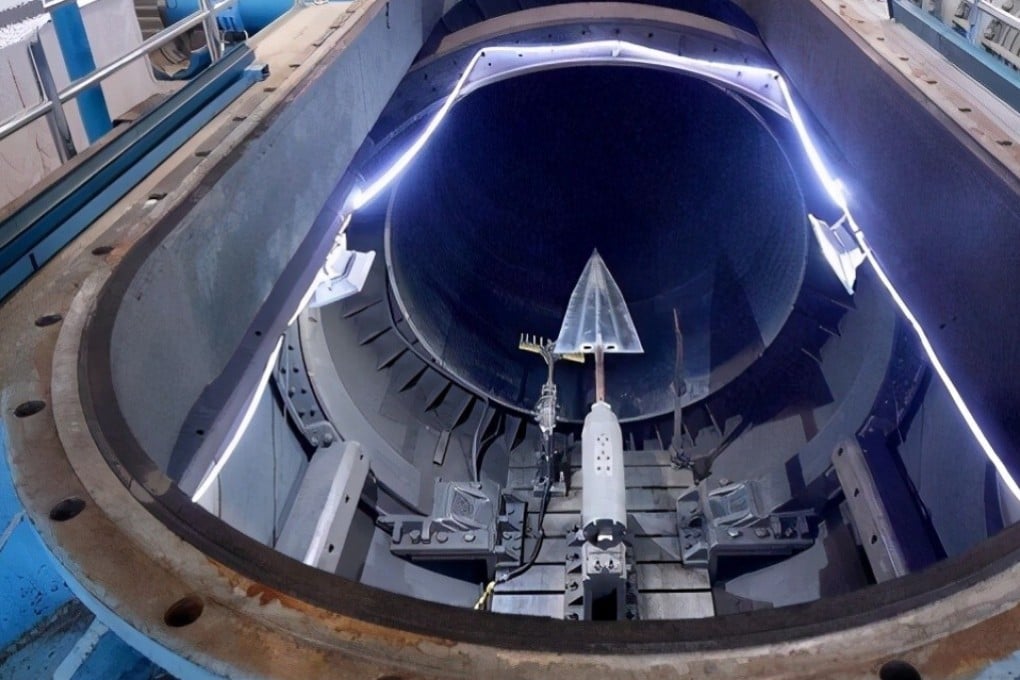Mach 30 wind tunnel to ‘put China decades’ ahead in hypersonic race
- Leading researcher reveals new facility capable of simulating flight at 30 times the speed of sound will be ready ‘soon’
- Power produced by the JF-22 will be seven times more than the Hoover Dam in the US, almost as much as Three Gorges

A Chinese physicist has said that a new wind tunnel in Beijing to be unveiled “soon” will put China decades ahead of the rest of the world in hypersonic technology.
Chinese Academy of Sciences researcher Han Guilai told an online lecture last week that the JF-22 wind tunnel, in Beijing’s Huairou district, was capable of simulating flights at up to 10km per second – 30 times the speed of sound. Together with an existing facility, also in Beijing, it would put China “about 20 to 30 years ahead” of the West.

01:41
China releases first images of Mars taken by Zhu Rong rover
Han, from China’s top hypersonic research agency the Institute of Mechanics, said the surface of an aeroplane travelling at such a speed could reach 10,000 degrees Celsius (18,032 Fahrenheit) – hot enough to break air molecules into atoms, even giving some of them an electric charge.
“This air is no longer the air we breathe in,” said Han. “The flying vehicle we study is like swimming in mud.”
Han said the power produced by the JF-22 wind tunnel would reach 15 gigawatts – nearly 70 per cent of the installed capacity of the world’s largest hydropower station Three Gorges Dam in China’s southwestern Sichuan province, or more than seven times the Hoover Dam in Nevada.
China, along with other major countries, has made huge investments in the development of hypersonic flight technology, which could make it possible for air travellers to land anywhere in the world in one or two hours. It would also cut the cost of space launches by more than 90 per cent, potentially bringing space travel within popular reach.